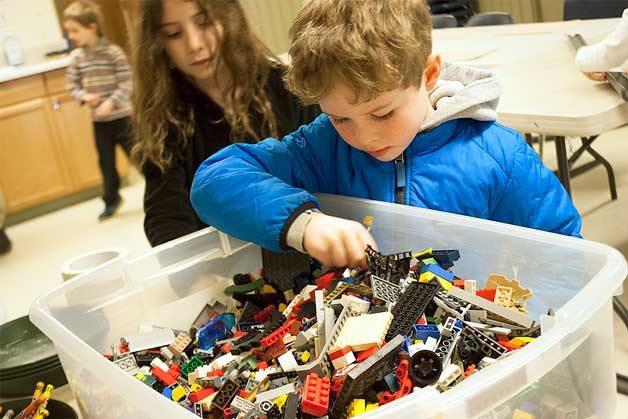 Instead of plopping down in front of the television before diving into homework, some kids are joining after-school enrichment programs, extending learning experiences instead of tube time after school.
Instead of plopping down in front of the television before diving into homework, some kids are joining after-school enrichment programs, extending learning experiences instead of tube time after school.
According to a recent study, the local program may be just what kids really need.
Released this month, the study “Kids on the Move: After-school Programs Promoting Healthy Eating and Physical Activity,” reveals that parents believe such programs are improving kids’ health and fitness.
The report is based on responses collected from 30,000 U.S. households, including in-depth interviews.
“After-school programs are a proven, but sometimes under appreciated, weapon in the battle against childhood obesity and physical inactivity,” said Jodi Grant, executive director of the Afterschool Alliance, a nationwide nonprofit that works to increase access to quality after-school programs.
Locally, Monday Science Labs is one of many after-school enrichment programs offered through the Bainbridge Island Metro Park & Recreation District. The Monday program in particular is geared for kids ages 5 through 10 to learn about science through experimentation and fun outdoor activities. It keeps kids moving with free play, activities and exercise at Camp Yeomalt.
“Children are learning through playing,” said Tim Lowell, a camp director for Monday Science Labs. “It’s great fun, but it is a tremendous learning experience.”
Recently, kids learned physics by building their own marble runways with foam tubes, tape and cardboard as a way to better understand gravity. While using critical thinking skills, students are also encouraged to be artistic with the way they go about experimenting.
“I tell my students that all artists have to know some science and all good scientists have to be creative and think artistically and outside the box,” he said.
Lowell — who often works with another instructor or college interns — is also a teaching member of the Bainbridge Island Arts Education Consortium. He believes difficult education topics are best addressed in an encouraging yet intriguing environment.
“Proper introduction of a subject to young children can foster a lifelong appreciation of the subject,” he said. “It is important that the child feels they like the subject, they are ‘good’ at it and that it is fun.
“If a child’s first exposure is positive, they can carry it over to advanced levels later in their academic career,” Lowell explained. “If a child’s introduction to a subject is negative, they may never explore it again.”
Hence why Lowell makes sure that things never get too serious, and which may just be why some of the most popular labs include making rockets, slime, color-mixing and the ooey-gooey experiment.
Along with indoor science experiments, students walk around the great outdoors, wandering through the camp’s small walking loop to talk about nature while enjoying some fresh air. After some indoor free play — often with LEGOs and other stimulating games — they head back outside for more physical activity.
For some, the outdoor space is a unique opportunity to appreciate nature.
“I like how the trees are spread out and that there’s madronas,” said third-grader Hannah Ast, who strolled along with a friend while admiring the scenery.
Identifying local foliage is also part of the trail exploration process for students when they venture outdoors, making them aware of potentially harmful plants and critters. Outdoor time even includes gathering near a campfire setup where Lowell shares his true stories, including the time pirates ran him off the coast of Mexico. Each time, he shares a different story about his life before teaching.
Wide-eyed and curious, his students usually sit on the edge of the benches, munching on snacks as Lowell weaves his tale. He doesn’t often make it through without someone asking him a question, but he keeps on telling the stories each week anyway.
Afterward, he’ll bring them inside for a lesson on cooking where he’ll introduce them to the idea of molecules or show them how measurement works. When possible, he’ll encourage them to be creative and decorate or shape their food in a unique way.
“I love to teach when kids are having fun,” Lowell said. “One of the most rewarding parts of working with children is seeing their joy of discovering something for the first time. Sometimes it is of science, nature or art and sometimes it is the discovery of their own ability.”
Six-year-old Lane Sturtevant agrees that learning is way better when it’s entertaining.
“I like that we get to make super yummy food and the person who is running the camp, he tells really good stories that he didn’t even make up,” he said.
Perhaps it is the fun activities that is fueling the interest in local after-school enrichment programs.
Recent studies released by the after-school Alliance showed a dramatic increase in participation in after-school programs over the last decade, growing from 6.5 million to 10.2 million children. That same survey documented a “vast and growing unmet demand for after-school” programs with parents of 19.4 million children reporting they would enroll their child if such a program were available.
The more recent information offers even more proof to after-school program advocates that the opportunities to extend learning are needed.
“We’ve known for a long time that after-school, before-school and summer programs keep kids safe, inspire them to learn, and help working parents,” said Grant, of Afterschool Alliance. “These new data make clear that they also do a tremendous amount to help keep kids healthy, now and for the future. The healthy habits after-school programs help instill can last a lifetime.”


